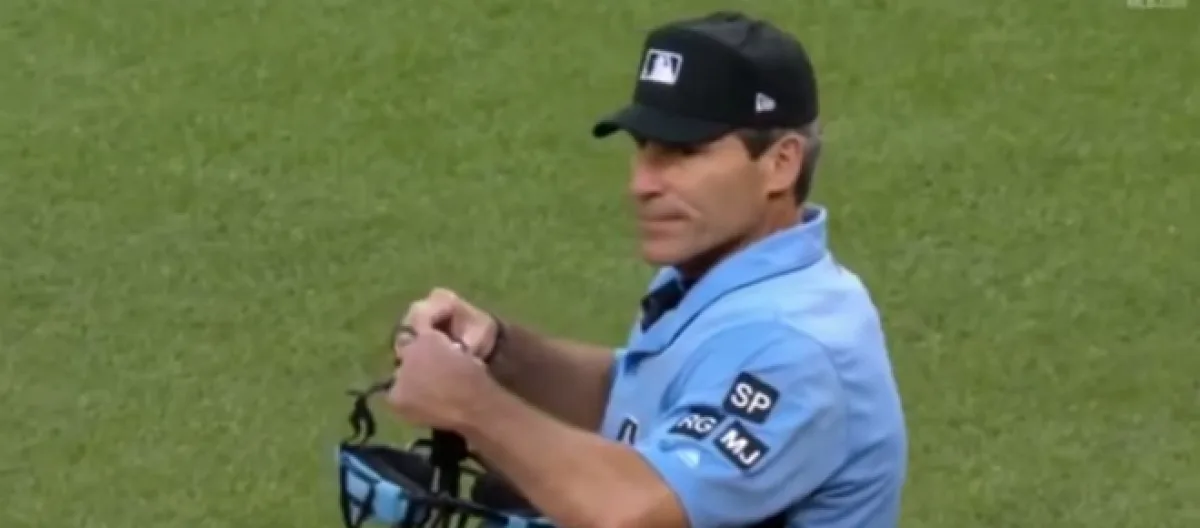Baseball players and fans have been frustrated with the human element of baseball Officiating since the game was invented. Even in the 1800s, the umpires would get grief about calls they made, whether in the strike zone or on the bases. These days, MLB umpiring decisions are closely observed because of the replay and graphics technology that is on television broadcasts and video boards.
Borderline pitches can now be compared on TV to an electronic strike zone, and seeing a missed call is much easier. There were a number of MLB trade deadline winners and losers this year. Also, the latest 2018 World Series odds have been revealed.
Some missed calls are painfully obvious. A recent example happened this past Sunday (August 5) at Wrigley Field, involving Cubs first baseman Anthony Rizzo and umpire Angel Hernandez, who has been known to make plenty of controversial calls over the years. On a 3-2 pitch, Hernandez called Rizzo out on strikes. The pitch was well down and away from the zone and Rizzo went off on him.
Hernandez admitted the call was wrong the next day, but it was just another instance of people getting frustrated over calls. This incident stirred up a lot of conversation.
Umpires vs new technology
Talks of an automated strike zone have been going on the past few years, especially after replay review was instituted. This means that instead of a human umpire behind the plate, it is a computerized system that would call balls and strikes. Ideally, this would assure that all pitches are called to complete accuracy.
Technology seems like the simple solution, but it is not so simple. A recent interview conducted in May by The Athletic's Ken Rosenthal with Commissioner Rob Manfred as reported by CBS's Dayn Perry was about the technology that is currently being developed in reading pitches.
"Let me say it in two different pieces," Manfred said. "I think we are much closer than we were a year ago to having the technological capability to actually call the strike zone. We have worked very hard on PITCHf/x.[sic]" After which he added, "When you take away the home plate umpire's control over the strike zone, you take away a principal piece of his authority in terms of managing the whole game."
While it is easy to just want the technology put in place, it is clear it is not even ready yet. There will still need to be some time before the technology is ready and reliable. Issues with the owners and umpires themselves are also a huge factor in this type of decision. This is not a switch that can just be flipped.
Comments by Manfred suggest that a change will happen, it is just a matter of when. Until then, #RobotUmps on Twitter will be used on a nearly daily basis.
Giving umpires some slack at times
Many umpires in the league, like Hernandez, Joe West, C.B. Bucknor, and Jerry Meals, have been calling games for decades, but it is easy to assume their jobs have gotten more difficult. More pitchers these days are throwing harder, with a number of guys hitting 100 MPH on the gun. No doubt it is a difficult job to stand back there and call some of these pitches when they go so fast.
Does this excuse these guys from some really bad miscalls? No, it does not. Some calls even made on replay review are ridiculous, considering how clear it is on screen.
However, there are instances on very close calls that are a bit more understandable. A 100 MPH pitch on edge of the lower outside corner is much easier to understand going either way, than a sinker breaking five inches off the plate being called a strike. When umpires admit their mistakes like Hernandez did after the Rizzo call, that can at least get them some deserved credit, even when the call was blatantly wrong.
In the end, people want the calls to be correct, and the inconsistency of some umpires naturally makes people mad. Baseball officiating could be very different in a decade or so with new technology.
